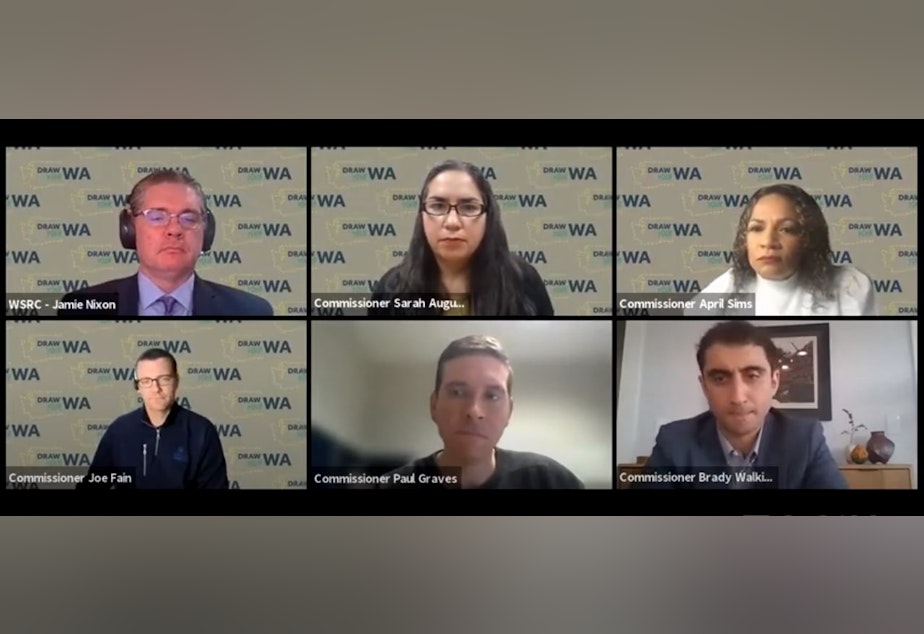While this WA commission's 'homework was turned in late, it was completed'

The Washington State Redistricting Commission had one job — redraw the state's congressional and legislative districts, and submit the new district maps by midnight Monday, Nov. 15.
The commissioners did turn their "homework" in, but it was late. And federal statute is a little like that teacher who couldn't be swayed by lines like "my dog ate it" or "we had technical issues" — the latter being a real reason commissioners offered.
States are required to redraw the districts, in which lawmakers are elected at the state and federal levels, every 10 years as the U.S. Census is updated.
Commissioners did release new congressional and legislative maps a day after its deadline. But that still leaves the state's Supreme Court to finish the job.
The court has until April 30, 2022 to finish the job.
Sponsored
As politics reporter David Hyde described it on KUOW's Friday Politics segment, thousands of people weighed in on the work that'd been going on for months. It all culminated in this final, five-hour-long meeting that provided little in the way of transparency.
Commissioners are asking the state's Supreme Court to adopt the maps they eventually released the next day, despite concerns some of them still have about compliance with the Voting Rights Act.
While the Court tries to figure out "exactly what did these commissioners even vote on," politicos are comparing the old and new, but not quite settled boundaries.
Political analyst and columnist Joni Balter keyed in on Washington's 8th Congressional District, the seat currently held by Democratic Rep. Kim Schrier and "where the most likely change in our congressional delegation could occur."
"The Commission did no favors for incumbent Schrier. She was in trouble before and, now, probably a little bit more," Balter says, because the new map would add large swaths of more conservative areas in north King County and Snohomish County.
Sponsored
"Before redistricting occurred, Schrier was on a list of 47 targeted House Democrats who Republicans wish to oust next year," Balter said. "That was true before the maps were proposed and a little bit more true now."
The state's Redistricting Commission has two Democrats, two Republicans and one nonpartisan, nonvoting member responsible for redrawing the maps. Balter notes it's been a national model of transparency for years. This was the fourth such Commission in Washington .
But the Commission didn't live up to that reputation, according to Balter and other observers. So, does that mean the state's system is now bunk?
Neither Balter nor Hyde think so, except "the national coverage of this was not great press for our system." And there are other options, Hyde adds.
For example, a nonpartisan rather than bipartisan system "where it's a little bit less than the kind of horse-trading that's necessary to reach these deals."
Sponsored
Oddly enough, he says, that might be exactly what we get out of the state Supreme Court.






